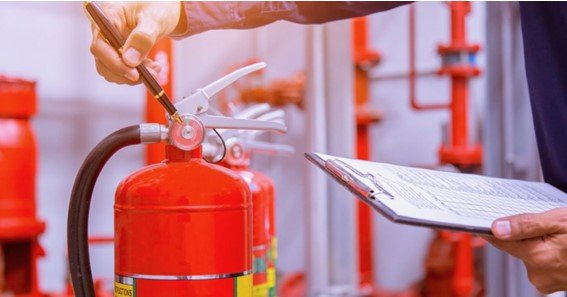Fire risk assessments are essential for any business or organization to protect their assets, employees, and customers. They provide an assessment of the potential risks associated with fire, helping businesses create a plan of action to reduce the risk of fire, detect and extinguish fires quickly, and minimize the damage and losses in the event of a fire. This article will discuss the importance of fire risk assessments and the benefits they can bring to businesses.
What is a Fire Risk Assessment?
A fire risk assessment is a process of evaluating the potential risks associated with fire in a business or organization. Fire risk assessments are essential for businesses to identify and reduce the risk of fire, detect and extinguish fires quickly, and minimize the damage and losses in the event of a fire. The assessment takes into account the layout of the premises, the materials and substances used, the number of people working, and any other factors that could increase the risk of fire.
Benefits of Fire Risk Assessments
Fire risk assessments provide businesses with a comprehensive evaluation of potential risks associated with fire. This helps businesses identify potential hazards and create a plan of action to prevent and reduce the risk of fire. Fire risk assessments can also help businesses detect and extinguish fires quickly, minimizing the damage and losses in the event of a fire.
In addition, fire risk assessments can help businesses to comply with fire safety regulations and ensure the safety of their employees, customers, and assets. Fire risk assessments can also provide businesses with peace of mind, knowing that they are doing everything they can to reduce the risk of fire and protect their people, property, and customers.
Click here – What Is Dead Load?
Assessing Fire Risks
When conducting a fire risk assessment, it is important to consider the layout of the premises, the materials and substances used, the number of people working, and any other factors that could increase the risk of fire. It is also important to consider the building’s fire safety systems, such as fire alarms, sprinkler systems, and fire extinguishers.
In addition to assessing the risks, it is important to develop a plan of action to reduce the risk of fire, detect and extinguish fires quickly, and minimize the damage and losses in the event of a fire. This plan should include the installation and maintenance of fire safety systems, such as fire alarms, sprinkler systems, and fire extinguishers; the implementation of safety protocols and procedures; employee training; and regular fire drills.
Implementing Fire Risk Assessments
Once the fire risk assessment is complete, it is important to implement the plan of action developed. This includes the installation and maintenance of fire safety systems, such as fire alarms, sprinkler systems, and fire extinguishers; the implementation of safety protocols and procedures; employee training; and regular fire drills.
It is also important to ensure that all employees are aware of the safety protocols and procedures, and understand how to react in the event of a fire. Regular fire drills should also be conducted to ensure that employees are familiar with the evacuation procedures. In addition, it is important to maintain and regularly inspect the fire safety systems to ensure they are functioning properly.
Fire risk assessments are essential for businesses and organizations to protect their assets, employees, and customers from fire. They provide an assessment of the potential risks associated with fire, helping businesses create a plan of action to reduce the risk of fire, detect and extinguish fires quickly, and minimize the damage and losses in the event of a fire. Fire risk assessments can also help businesses comply with fire safety regulations and ensure the safety of their employees, customers, and assets.

